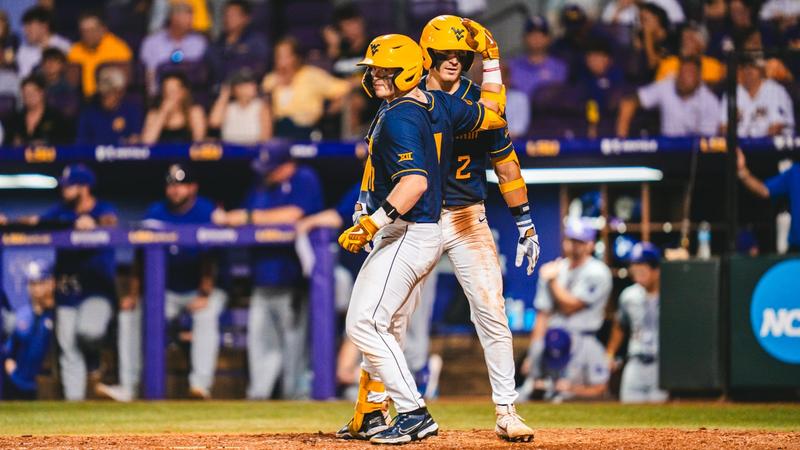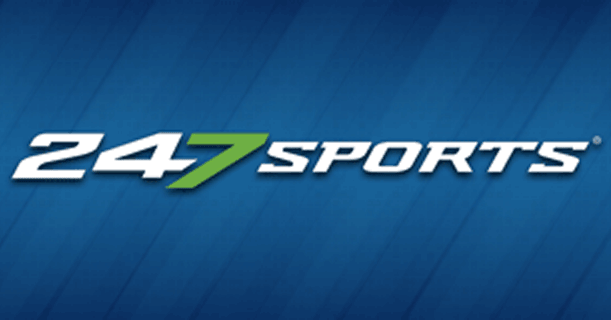NIL
How name, image and likeness is shaking up college football
KNOXVILLE, Tenn. (WVLT) – There’s no “I” in “team,” but there’s three in “millionaire” and one big one in NIL, or Name, Image and Likeness. It’s a system that’s causing headaches for coaches and putting money in student athlete pockets. Since coming on the scene, NIL deals have created confusion and turned college sports into, […]

KNOXVILLE, Tenn. (WVLT) – There’s no “I” in “team,” but there’s three in “millionaire” and one big one in NIL, or Name, Image and Likeness. It’s a system that’s causing headaches for coaches and putting money in student athlete pockets.
Since coming on the scene, NIL deals have created confusion and turned college sports into, for all intents and purposes, a professional sports league. This early into its implementation, the NIL world is also the wild west.
“It’s just so vastly different,” WVLT contributor and staple of the Volquest staff Brent Hubbs said. “We’re all trying to get our hands on the landscape, and it’s a landscape that keeps changing seemingly every year, and at this point, nothing seems really unimaginable, if you will.”
NIL was originally implemented to supplement student athlete scholarships, but as more money has come into the world of college football, student paychecks are getting bigger and bigger. In some ways, it’s created a sense of entitlement for some players.
Previous Coverage: ‘No one is bigger than the Power T’ | Tennessee parts ways with Nico Iamaleava
Most recently, the University of Tennessee went through that with the departure of Nico Iamaleava. The player recently parted ways with Tennessee after reports that he was unhappy with his pay.
ESPN’s Chris Low, who broke the news about Iamaleava, said part of the issue is the lack of regulation when it comes to what a player is worth.
“You tell me what fair market value is,” he said. “You get 40 people together. They’re going to give you different definitions of what fair market value is.”
Head Coach Josh Heupel went on the record after a Nico Iamaleava-less Orange and White game to confirm the university was moving on from the quarterback. He also spoke about the obstacles of recruiting in 2025.
“You’re looking at the physical traits and playing style of the player. You’re looking at the developmental plan, right?” he said. “You try to find the right guy at the right time and right price.”
Those last two words — right price — make all the difference.
Copyright 2025 WVLT. All rights reserved.
NIL
Ross Dellenger reveals Kentucky basketball led charge to scuttle SEC capping NIL spending by sport
On Saturday, Judge Claudia Wilken approved the House v. NCAA settlement, which officially ushered in the era of revenue sharing. Specifically, college will be allowed to directly pay their respective athletes $20.5 million per year. It’s up to each college’s discretion on how they split up the money to each athletic program. However, some conferences […]

On Saturday, Judge Claudia Wilken approved the House v. NCAA settlement, which officially ushered in the era of revenue sharing. Specifically, college will be allowed to directly pay their respective athletes $20.5 million per year.
It’s up to each college’s discretion on how they split up the money to each athletic program. However, some conferences have reportedly considered creating uniform percentages of the revenue for each program to receive from their respective school.
Per Yahoo! Sports’ Ross Dellenger, the SEC was one of the conferences examining this option. During an appearance on The Matt Jones Show, Dellenger revealed that Kentucky basketball, and several other programs, spoke out against the idea when it was proposed.
“The SEC had actually gone down the road on doing that,” Dellenger said. “I know football was at least $13.5 million. I can’t remember any of the other figures. Basketball may have been like $2.8 million, and the SEC had set some of those standards.
“But, Kentucky did not — and some others too — but Kentucky basketball, specifically, was a pretty big voice in the room to make sure that those standards weren’t set as a policy, because Kentucky obviously wants to spend more.”
While football still brings in the most revenue for Kentucky, the school’s basketball program reels in far more money than most competing SEC programs. Thus, it’s natural for members of the program to believe they deserve more of the $20.5 million available.
After all, programs like Kentucky basketball have to worry about competing against other blue-chip programs outside of the SEC such as Duke or Kansas that would likely not be facing the same cap. Kentucky basketball reportedly wasn’t the only program that disapproved of pre-arranged revenue percentages.
“It wasn’t just Kentucky that wanted to spend more in basketball,” Dellenger said. “Think about South Carolina women’s basketball, Arkansas baseball, LSU baseball… There were plenty of programs that wanted to spend more than the standards, sort of the maximum standards, that the SEC was talking about doing. So they kind of bailed on it for now.”
Of course, the SEC could circle back around on the idea. After all, college athletics is only in the earliest stages of this new era. New authorities such as the College Sports Commission could have a loud voice in discussions, such as the one Dellenger mentioned, moving forward.
To pile on, new issues will arise as schools and athletes bring forward further lawsuits that contest Wilken’s ruling. Additionally, schools are currently still unfamiliar with the new clearinghouse process that will approve of NIL deals that emerge from outside the school’s direct payments.
NIL
West Virginia’s Season Ends With Loss at LSU in NCAA Super Regional
BATON ROUGE, La. – The West Virginia University baseball team saw its season come to an end on Sunday as the Mountaineers fell to No. 6 LSU, 12-5, in the NCAA Super Regionals at Alex Box Stadium. WVU finishes the season with a 44-16 overall record. Juniors Sam White and Ben […]

BATON ROUGE, La. – The West Virginia University baseball team saw its season come to an end on Sunday as the Mountaineers fell to No. 6 LSU, 12-5, in the NCAA Super Regionals at Alex Box Stadium. WVU finishes the season with a 44-16 overall record.
Juniors Sam White and Ben Lumsden each hit home runs for the Mountaineers and drove in two. Senior Jace Rinehart added his ninth home run of the season as well.
On the mound, graduate Jack Kartsonas suffered the loss with six runs allowed in 2.0 innings. Sophomore Chase Meyer had four strikeouts in 4.0 innings while junior Ben McDougal tossed 2.1 hitless innings.
The Tigers scored a run in the first to take an early lead before adding five in the second to go up 6-0 after two innings.
In the fourth, White got the Mountaineers on the board with a solo home run before Lumsden added a two-run shot a couple of batters later. White got West Virginia within two in the fifth with an RBI single.
WVU’s defense failed them in the seventh with three errors as LSU scored six runs, five of which were unearned.
In the eighth, Rinehart hit a solo home run, but that was the end of the scoring for West Virginia.
LSU advances to the College World Series which begins Friday, June 13 in Omaha, Nebraska.
For more information on the Mountaineers, follow @WVUBaseball on Twitter, Facebook and Instagram.
NIL
Without Action, NIL Risks Entrenching Inequities (opinion)
When the National Collegiate Athletic Association authorized students to monetize their name, image and likeness (NIL) rights in 2021, the decision was framed as a transformative disruption of amateurism, a chance to democratize financial opportunities across all college athletes, regardless of gender, sport or institutional affiliation. Advocates envisioned a marketplace where visibility, entrepreneurship and merit […]

When the National Collegiate Athletic Association authorized students to monetize their name, image and likeness (NIL) rights in 2021, the decision was framed as a transformative disruption of amateurism, a chance to democratize financial opportunities across all college athletes, regardless of gender, sport or institutional affiliation. Advocates envisioned a marketplace where visibility, entrepreneurship and merit could eclipse systemic bias.
Four years later, the results are starkly disproportionate. Despite NIL’s promise of inclusion, early outcomes reveal a new iteration of entrenched hierarchies. Football and men’s basketball athletes capture the overwhelming majority of NIL earnings, while women athletes and athletes on nonrevenue teams fight for a marginal share of the market. Without deliberate structural reform, NIL threatens to entrench long-standing inequities under a modern guise.
NIL’s Uneven Impact
Industry data shows that nearly 80 percent of NIL dollars flow to male athletes, particularly in football and men’s basketball. Female athletes, even those with notable athletic success or strong social media presences, remain vastly underrepresented in the NIL economy.
Structural factors reinforce this disparity. Booster-backed NIL collectives, which pool financial resources to support athletes, heavily favor men’s sports. Corporate sponsorships and media deals mirror historical inequities, channeling investment into male-dominated programs while relegating women’s teams to the periphery. Visibility begets value, and in a marketplace where women’s sports still struggle for equitable media exposure, the playing field remains far from level.
NIL was not designed to correct these underlying market forces, but it now magnifies them. Without intervention, it risks solidifying a two-tiered economy in college athletics.
Structural Challenges on the Horizon
Experts in college athletics governance warn that emerging legal frameworks will further complicate the NIL landscape. The House v. NCAA settlement is slated for implementation on July 1. It will allow universities to directly share revenue with student athletes, capped at $20.5 million annually per institution.
Under this model, institutions must balance new forms of direct compensation with Title IX obligations and financial sustainability. Yet as legal scholars note, mechanisms for ensuring gender equity in relation to institutional NIL payments remain vague. Enforcement is expected to focus on egregious violations, not on proactively monitoring systemic disparities.
It is worth noting that these reforms are built around the infrastructure of the Power Four conferences, former Power Five members and high-revenue sports programs, leaving smaller institutions to bear the consequences. A key critique raised during policy discussions is that the NCAA is funding legal defenses and settlements (such as House v. NCAA) largely stemming from Power Five football, despite receiving no revenue from the College Football Playoff, which is independently operated by the conferences. The NCAA’s primary income source is March Madness, yet it shoulders the regulatory and legal burdens tied to football governance.
The settlement also introduces roster limits as a cost-control and Title IX compliance strategy. While reducing football roster sizes may create financial savings, roster limits risk unintended consequences: shrinking athletic opportunities and destabilizing programs that have historically expanded access for women. Institutions must tread carefully to avoid worsening inequities under the banner of financial reform. Fewer athletes also mean fewer enrolled students paying tuition and contributing to campus life, subtler but significant consequences for institutional sustainability.
Additionally, with federal guidance on NIL payments and Title IX in flux since the change in presidential administrations in January, it remains unclear how Title IX should apply to direct athlete compensation and NIL structures. This regulatory uncertainty is unfolding alongside a broader retrenchment in higher education equity efforts. Diversity, equity and inclusion initiatives have faced mounting political and legal challenges, with many institutions scaling back public-facing commitments to equity under state pressure or due to administrative caution.
For instance, states like Florida, Oklahoma and Texas have enacted laws and policies that dismantle DEI offices and restrict related programming at public universities. These states collectively host more than a dozen Power Four institutions, including prominent programs in the SEC and Big 12 conferences. The elimination of DEI infrastructure in these states not only limits institutional capacity to address equity in NIL implementation but also exacerbates compliance challenges under Title IX. In this climate, even well-intentioned NIL reforms risk deprioritizing gender equity, not only at institutions facing state legislative pressures, but across the broader higher education landscape, where structural limitations and regulatory ambiguity increasingly constrain equity-focused work.
Without a coherent federal framework, institutions are left to interpret compliance on their own, often inconsistently and without the tools to embed gender equity into NIL design. As regulatory momentum builds, there is a real risk that top-down reforms will entrench existing hierarchies rather than dismantle them. Legal pressure is mounting as well: Cases against the NCAA are increasingly addressing more nuanced areas of NIL, including media rights, retroactive compensation and the classification of athletes as employees. These developments signal that without clear, equity-centered policy, institutions may soon find themselves not only out of compliance, but in court.
Building Equity by Design
Higher education must recognize that NIL is not just a financial or athletic issue; it is a fundamental equity issue. Institutions cannot afford to replicate old hierarchies under a new system.
Concrete steps forward include:
- Building equitable promotional strategies: Ensure comparable visibility across men’s and women’s sports by investing in joint marketing campaigns, content creation resources and equitable social media promotion, not just traditional media coverage.
- Implementing comprehensive NIL education programs: Offer workshops that directly address gender-based disparities in financial literacy, contract negotiation, branding strategies and legal rights, for both student athletes and coaching staffs.
- Strengthening institutional NIL infrastructure: Equip athletic departments with trained NIL administrators, general managers and compliance officers to support equitable deal facilitation and roster management across all sports, not just revenue teams.
- Structuring donor engagement more inclusively: Actively encourage booster support for women’s and Olympic sports by creating collective fundraising goals, incentive matches and branding opportunities that spotlight underrepresented teams.
- Embedding Title IX compliance at every stage: Require that institutional NIL deals undergo equity review for gender representation before approval and align NIL policies with broader Title IX audits to ensure systemic, not incidental, compliance.
- Expanding shared governance around NIL oversight: Engage faculty senates, equity officers and trustees in the design and review of NIL policies to ensure they align with broader institutional commitments to Title IX and educational access.
NIL offers unprecedented opportunities for student-athletes, but opportunity alone does not guarantee equity. Without intentional correction, the marketplace will reflect and reinforce historical biases. Colleges and universities must commit not merely to participating in the NIL era, but to shaping it in a way that honors the values of inclusion, fairness and educational purpose.
NIL
Softball America Top 25 Rankings: Final 2025
The 2025 college softball season has concluded after the Texas Longhorns claimed their first national title. Texas, which was the No. 1 in our poll eight of 14 times this season, returns to that top spot after the 2025 Women’s College World Series. All eight Women’s College World Series teams, along with Clemson and Florida […]

The 2025 college softball season has concluded after the Texas Longhorns claimed their first national title. Texas, which was the No. 1 in our poll eight of 14 times this season, returns to that top spot after the 2025 Women’s College World Series. All eight Women’s College World Series teams, along with Clemson and Florida State, round out the Top 10.
Teagan Kavan’s historic WCWS performance leads Texas to first national championship
Three teams that were unranked ahead of conference tournament week. Liberty and Georgia return to the rankings after their Super Regional appearances. North Florida makes its first-ever appearance in the Softball America poll after reaching the Columbia Regional Final.
Read more: Top 100 College Softball Players of the 2025 season
| Ranking | Team | Record | Last Week Ranking |
| 1 | Texas | 56-12 | 6 |
| 2 | Texas Tech | 54-14 | 9 |
| 3 | Oklahoma | 52-9 | 4 |
| 4 | Tennessee | 47-17 | 5 |
| 5 | UCLA | 55-13 | 11 |
| 6 | Oregon | 54-10 | 8 |
| 7 | Ole Miss | 42-21 | 21 |
| 8 | Florida | 48-17 | 7 |
| 9 | Clemson | 48-14 | 10 |
| 10 | Florida State | 49-12 | 3 |
| 11 | Arkansas | 44-14 | 1 |
| 12 | Alabama | 40-23 | 15 |
| 13 | Nebraska | 43-15 | 19 |
| 14 | South Carolina | 44-17 | 12 |
| 15 | Liberty | 50-15 | NR |
| 16 | Georgia | 35-23 | NR |
| 17 | Texas A&M | 48-11 | 2 |
| 18 | Arizona | 48-13 | 14 |
| 19 | Stanford | 42-13 | 16 |
| 20 | Virginia Tech | 43-13 | 17 |
| 21 | LSU | 42-16 | 13 |
| 22 | Mississippi State | 39-19 | 17 |
| 23 | Ohio State | 45-14-1 | 18 |
| 24 | Duke | 41-18 | 22 |
| 25 | North Florida | 47-15 | NR |
Also received votes: Southeastern Louisiana
For transfer portal news, stay up to date with the Softball America transfer wire and the Dugout, our discussion board for members.
NIL
What is the end date for the crazy NIL deals?
Gyandle said… (original post) You don’t think legislation is going to stop teams from finding a way to use rich boosters to slide players money? They did it before NIL. They did… show more That is kind of a ridiculous line of thinking. Sure, there will be some payments outside the system, but for perspective, […]



Gyandle said… (original post) You don’t think legislation is going to stop teams from finding a way to use rich boosters to slide players money? They did it before NIL. They did…
That is kind of a ridiculous line of thinking. Sure, there will be some payments outside the system, but for perspective, during the bagman era, major deals were less than 10% of what they became when it was legalized. Tiny in comparison. It’ll go back that way. The ultra rich just can’t launder that amount of money under the table, nor do most of the ultra rich have the stomach for that type of thing. So it will be peanuts compared to what it was…we know, because we saw what it was when it was under the table before. Tiny in comparison. Less than revenue share that is coming by a long shot.
NIL
Notre Dame Baseball
We’re all at home watching the NCAA Baseball Tournament — including the Notre Dame Fighting Irish baseball prgram. They would like to get back to making a regional appearance next season for the first time in 4 years, and it will likely be the transfer portal that will help decided that fate. This past weekend, […]



We’re all at home watching the NCAA Baseball Tournament — including the Notre Dame Fighting Irish baseball prgram. They would like to get back to making a regional appearance next season for the first time in 4 years, and it will likely be the transfer portal that will help decided that fate.
This past weekend, Notre Dame added two new pitchers from the transfer portal.
Garrett Stratton, a right-handed pitcher from the Rice Owls, is coming to South Bend next year.
The next day it was Ty Uber from the Stanford Cardinal, another right handed pitcher, that also announced his decision to transfer to Notre Dame.
The Irish will still need more help for the 2026 season, but adding quality pitching to the staff is a great start.
-

 College Sports3 weeks ago
College Sports3 weeks agoPortal Update – Basketball and Gymnastics Take Hits
-

 Professional Sports3 weeks ago
Professional Sports3 weeks agoJon Jones answers UFC retirement speculation as fans accuse champion of 'holding the belt …
-

 Youtube3 weeks ago
Youtube3 weeks agoXavier Legette taught Marty Smith his signature celly
-

 Motorsports3 weeks ago
Motorsports3 weeks agoWhy IHOP Rode With Dale Earnhardt Jr. In Amazon NASCAR Debut
-

 NIL2 weeks ago
NIL2 weeks ago2025 NCAA Softball Tournament Bracket: Women’s College World Series bracket, schedule set
-

 College Sports3 weeks ago
College Sports3 weeks agoNCDC Commitment Profiles: Cyclones’ Martins Moving On to Saint Anselm College • USPHL
-

 High School Sports3 weeks ago
High School Sports3 weeks agoToday in the MHSAA
-

 Health4 days ago
Health4 days agoOregon track star wages legal battle against trans athlete policy after medal ceremony protest
-

 Professional Sports4 days ago
Professional Sports4 days ago'I asked Anderson privately'… UFC legend retells secret sparring session between Jon Jones …
-

 College Sports1 week ago
College Sports1 week agoIU basketball recruiting


























 STEPHEN A. CALLS OUT LEBRON for Giannis and NBA eras comments
STEPHEN A. CALLS OUT LEBRON for Giannis and NBA eras comments  | First Take
| First Take






